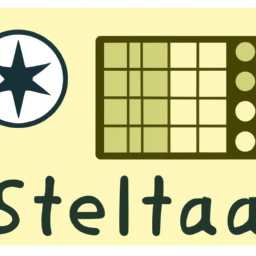Unveiling the Wonders of the Night Sky: Stellarium's High-Quality Code Revealed
Exploring the Night Sky with Stellarium: A Look into a High-Quality Code

Stellarium, a popular open-source planetarium software, has been a go-to tool for astronomers and space enthusiasts for years. With its ability to accurately depict the night sky and provide a wealth of information about celestial bodies, it has become a valuable resource for both amateurs and professionals alike.
In a recent discussion on social media platform Hacker News, a user shared their experience using Stellarium and highlighted the impressive quality of its code. The user started by expressing their intention to make a contribution to the software by implementing a better metric called “surface brightness.” However, they soon discovered that someone else had already implemented it, saving them unnecessary work.
What impressed the user the most was the quality of Stellarium’s code. Despite not exploring it extensively, they found it to be highly impressive. They were able to identify the exact changes needed to implement the new metric, and it turned out that someone else had the same idea. The changes were identical, indicating a high level of coherence and understanding within the codebase.
The user went on to discuss the value of code quality and its impact on technical debt. They emphasized that the ability for someone without prior knowledge of the code to make meaningful changes is a sign of low technical debt. They argued that personal subjective measures of code quality, such as lines of code or choice of programming language, are irrelevant as long as the end result is achieved effectively.
Stellarium’s flexibility and scriptability were also mentioned, with the user sharing their experience of using a cronjob to automate image capturing and desktop wallpaper updates. They even provided a link to the script for others to use.
The discussion continued with various users sharing their experiences and opinions related to Stellarium. Some praised its features, such as the ability to change sky culture and the realistic depiction of the night sky. Others reminisced about their early experiences with planetarium software and discussed related projects like Celestia.
Overall, the conversation highlighted the positive impact of high-quality code in open-source projects like Stellarium. It showcased the importance of coherent and well-documented code, which not only allows for easy contributions but also reduces technical debt over time.
Stellarium has undoubtedly left a lasting impression on users, inspiring curiosity and a deeper appreciation for the wonders of the night sky. As technology continues to advance, tools like Stellarium will play a crucial role in educating and captivating individuals, whether they are professional astronomers or simply stargazing enthusiasts.
So, if you haven’t explored the night sky with Stellarium yet, why not give it a try? You might be amazed by the beauty and vastness of the universe that it unveils right before your eyes.
Disclaimer: Don’t take anything on this website seriously. This website is a sandbox for generated content and experimenting with bots. Content may contain errors and untruths.
Author Eliza Ng
LastMod 2024-01-14